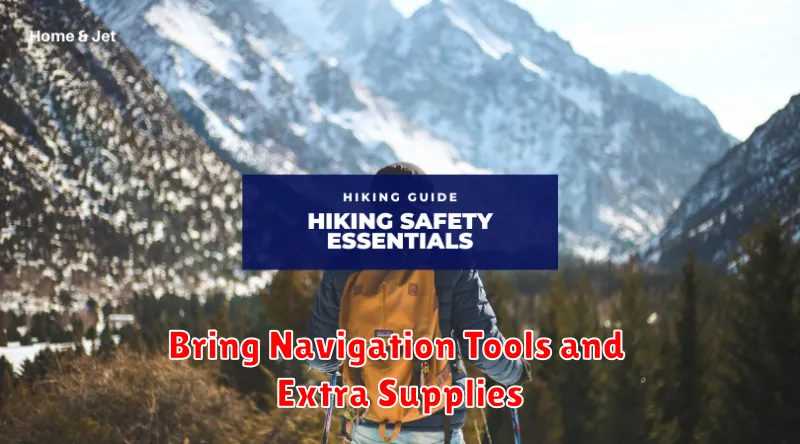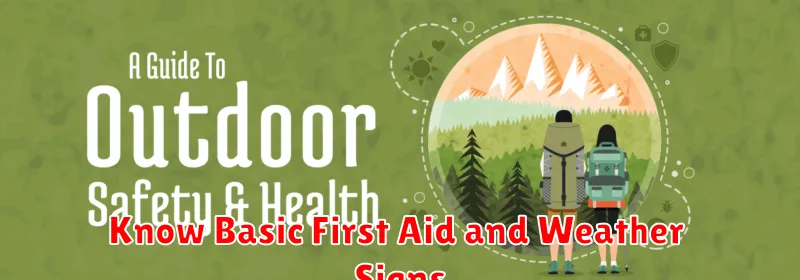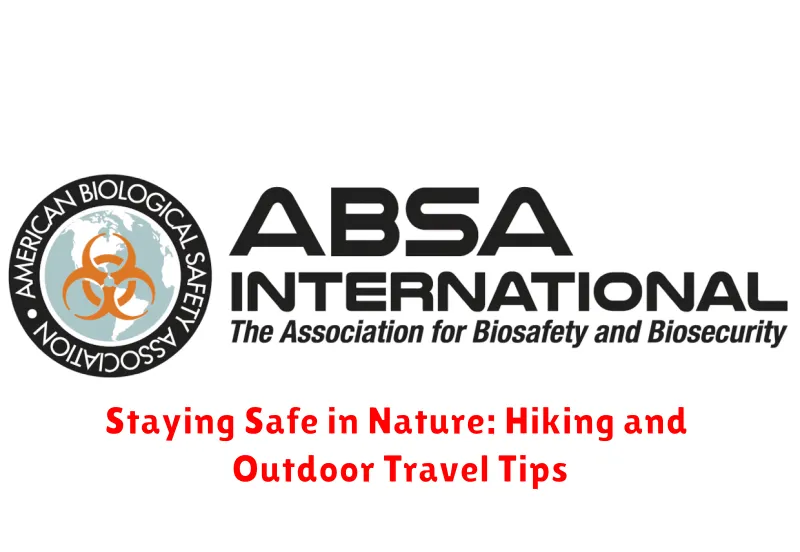Venturing into the wilderness offers incredible rewards, from breathtaking views to invigorating physical challenges. However, hiking and outdoor travel require careful planning and preparation to ensure your safety. Staying safe in nature is paramount to a positive experience. This article provides essential hiking and outdoor travel tips to help you mitigate risks and enjoy the beauty of the natural world with confidence. Understanding potential hazards, packing appropriately, and knowing how to respond to emergencies are crucial elements for any outdoor adventure.
Whether you’re a seasoned hiker or planning your first outdoor trip, prioritizing safety in nature is non-negotiable. From navigating challenging terrain to dealing with unpredictable weather, understanding how to stay safe can significantly impact your experience. This guide offers comprehensive hiking and outdoor travel tips covering essential topics such as navigation, first aid, wildlife awareness, and leave-no-trace principles. By following these guidelines, you can minimize potential dangers and ensure a memorable and safe journey in the great outdoors.
Research the Trail and Terrain in Advance
Prior to embarking on any hike, thorough research is essential for a safe and enjoyable experience. Understanding the trail’s difficulty, distance, and elevation gain will help you prepare adequately and avoid unexpected challenges. Consult reputable sources like park websites, trail guides, and online hiking communities for detailed information.
Pay close attention to recent trip reports or reviews from other hikers. These can offer valuable insights into current trail conditions, potential hazards like downed trees or washed-out sections, and the presence of wildlife. Being aware of these factors allows you to adjust your plans accordingly.
Familiarize yourself with the terrain. Is it rocky, steep, or primarily flat? Knowing the terrain type informs your choice of footwear and equipment. It also allows you to assess your physical capabilities and determine if the hike is suitable for your fitness level. A challenging hike might require additional training or preparation beforehand.
Understanding the trail and terrain helps you estimate the time required for completion. This is crucial for planning your departure and return, ensuring you have enough daylight and minimizing the risk of getting caught in darkness.
Inform Someone Before You Hike
Before embarking on any hike, it’s crucial to inform someone about your plans. This is a fundamental safety precaution that can significantly increase your chances of a timely rescue should an unforeseen event occur. Tell a trusted friend, family member, or park ranger about your intended route, estimated start and finish times, and the number of people in your group.
Be as specific as possible with your hiking details. Sharing a map of your planned route can be incredibly helpful. Provide details about your vehicle, including the make, model, and license plate number, and where you intend to park it. This information can prove invaluable in a search and rescue operation.
Check in with your contact person upon completing your hike. This simple act lets them know you’re safe and sound. Should you fail to check in by the agreed-upon time, your contact person can alert the appropriate authorities, initiating a search if necessary.
Bring Navigation Tools and Extra Supplies

Navigation tools are crucial for staying safe in nature. Don’t rely solely on your phone. Carry a physical map and compass and know how to use them. A GPS device can also be beneficial, but ensure it’s fully charged and you understand its operation. These tools will help you stay oriented, especially in areas with unreliable cell service.
Packing extra supplies is essential for handling unexpected situations. A first-aid kit is a must-have, containing essentials like bandages, antiseptic wipes, pain relievers, and any personal medications. Bring extra food and water beyond what you anticipate needing. Weather can change rapidly, so pack extra layers of clothing, including a waterproof jacket and hat.
Other helpful items include a headlamp or flashlight with extra batteries, a multi-tool or knife, a whistle for signaling, and a lighter or waterproof matches. These supplies can prove invaluable in emergencies. Prepare for the unexpected and ensure a safer and more enjoyable outdoor experience.
Know Basic First Aid and Weather Signs

Basic first aid knowledge is crucial for any outdoor adventurer. Pack a well-stocked first aid kit and familiarize yourself with treating common injuries like cuts, sprains, blisters, and insect bites. Knowing how to respond to more serious situations like fractures or heatstroke can be life-saving while awaiting professional medical assistance.
Understanding weather signs is equally important for staying safe. Learn to recognize developing storms. A darkening sky, sudden gusts of wind, or a drop in temperature can indicate an approaching storm front. Knowing the difference between cumulus and cumulonimbus clouds can help you predict potential rainfall or thunderstorms. Being aware of these signs allows you to seek shelter and avoid potentially dangerous situations.
Avoid Wild Animals and Risky Paths
Wildlife encounters can be exciting, but safety should always be paramount. Never approach or feed wild animals. Maintain a safe distance and observe them from afar. Carry bear spray in bear country and know how to use it properly. Store food and scented items in airtight containers and dispose of trash responsibly to avoid attracting animals to your campsite.
Trail safety is also crucial. Stick to marked trails and avoid shortcuts. Unmarked paths can lead to dangerous terrain or getting lost. Be aware of your surroundings and watch for changes in the trail conditions. Check the weather forecast before heading out and be prepared for changing weather. Avoid hiking alone, especially in remote areas. Inform someone of your hiking plans, including your route and expected return time.
Be cautious around water sources. Swift currents and slippery rocks can pose hazards. Never cross a swollen river or stream. Exercise caution near cliffs and steep drop-offs, maintaining a safe distance from the edge.
Stay on Marked Trails
Staying on marked trails is a fundamental safety practice for any hiker. These trails are designed to guide you through safe and manageable terrain, minimizing the risk of getting lost or encountering hazardous conditions.
Marked trails often offer the most efficient route, reducing the chances of exhaustion or encountering difficult terrain unexpectedly. Wandering off trail increases your risk of injury from falls, unstable ground, or encounters with poisonous plants and wildlife.
By adhering to designated pathways, you contribute to the preservation of the natural environment. Off-trail hiking can cause erosion, damage fragile ecosystems, and disturb wildlife habitats.
Trail markers, such as blazes, cairns, and signs, are strategically placed to help you navigate. Familiarize yourself with the types of markers used in the area you are hiking and refer to a map frequently to confirm your location. If you become disoriented, retracing your steps to the last known marker is usually the safest course of action.
Respect the Environment and Leave No Trace
Preserving our natural spaces is crucial for future generations. When enjoying the outdoors, follow the Leave No Trace principles. This means minimizing your impact and leaving the environment as you found it, or even better.
Pack out everything you pack in, including trash and food scraps. Properly dispose of waste in designated receptacles. If none are available, carry it with you until you find one.
Stay on established trails to avoid damaging vegetation and disturbing wildlife. Avoid creating new paths. Camp only in designated areas and use existing fire rings or stoves if fires are permitted.
Leave natural and cultural artifacts undisturbed. Resist the urge to pick flowers, collect rocks, or take “souvenirs.” Observe wildlife from a distance and avoid feeding or approaching them.
Be considerate of other visitors. Keep noise levels down and maintain a clean campsite. Yield to others on the trail, and enjoy the peace and tranquility of nature responsibly.

